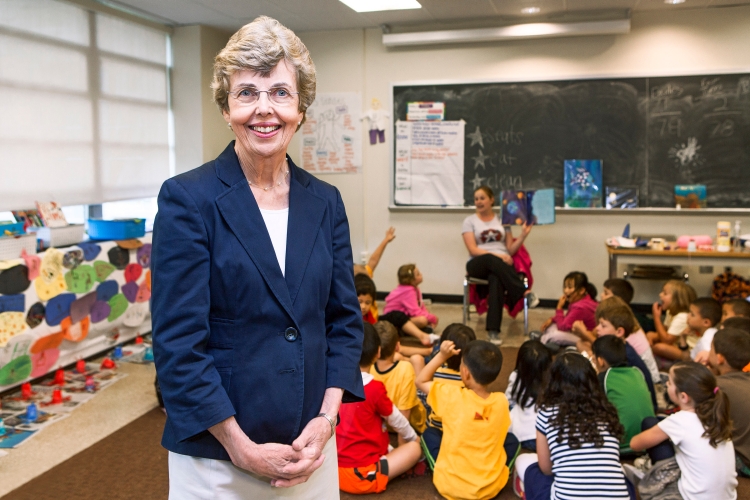
By
A 10-year study by Lynch School of Education researchers has found that by addressing the out-of-school factors that stifle learning, high-poverty schools produce dramatic improvement in their students’ grades, standardized test scores and long-term academic success.
Researchers from City Connects, launched by Lynch School faculty in 2001, followed 7,948 low-income Boston Public Schools students between 1999 and 2009 and found the negative educational effects of poverty on learning could be cut nearly in half by City Connects’ novel approach to student support services. The researchers reported their findings recently in the prestigious American Educational Research Journal.
City Connects founder and director, Kearns Professor of Urban Education Mary E. Walsh, said the findings show it is possible for schools to take on factors previously thought to be beyond the reach of educators and offer new insights into reducing the achievement gap.
“The American Educational Research Journal has published the first rigorous study of the ability of optimized student support to affect the academic performance of students living in poverty, through a model that is easily adaptable in public, private or charter schools at an annual cost of about $500 per student,” said Walsh.
“This study is a call to action to change the way we address the achievement gap and the ‘poverty gap’ in our most challenged schools.”
The initiative’s “optimized student support” model focuses on academic support and also connects students with health care, mental health services, family supports and after-school enrichment. Traditionally, “student support” has been viewed as the work of school counselors or social workers. The City Connects model is coordinated by a trained professional within each school who leverages community- and school-based services to address each child’s unique needs.
Students who participated in the program during elementary school earned higher English-language arts and math grades than their peers in non-City Connects schools, according to the report. Furthermore, students from City Connects schools continued to earn higher grades and performed significantly better on state standardized tests in math and English-language arts during middle school.
City Connects has grown to serve 20,000 students in 63 public, private and charter schools in Boston and Springfield, Mass., New York City and Dayton and Springfield, Ohio.
As part of a rigorous longitudinal evaluation built into the City Connects initiative, a team of researchers from BC and other universities studied nearly 8,000 Boston Public Schools students for a decade. Among the key findings:
• For students who attended elementary schools implementing City Connects, by eighth grade their performance on statewide standardized tests was 17 percentile points higher in math and 13 percentile points higher in English-language arts compared to their peers outside the program.
• By seventh grade, the positive effect of City Connects on both math and English-language arts standardized test scores was equivalent to nullifying approximately half the effects of poverty on a child’s academic performance.
• Students who attended City Connects schools in grades K-5 were about half as likely to drop out of high school as students who were not part of the program.
In 2013-14, across all City Connects sites, more than 17,500 students were linked to 105,000 services and enrichment opportunities provided by school districts and 600 community partners, Walsh said. Through the work of an on-site coordinator – a trained school counselor or social worker – City Connects provides each student with a tailored set of services, typically three or more supports or enrichments per student.
That support is having dramatic effects that reach into middle and high school, years after the intervention, Walsh said. City Connects students were 50 percent more likely to be admitted to Boston’s competitive exam schools, 45 percent less likely to repeat ninth grade, 25 percent less likely to be chronically absent, and about half as likely to drop out of high school, according to Walsh, who directs the Center for Optimized Student Support at the Lynch School.
As policymakers at the state and national levels focus on new ways to close the achievement gap, the City Connects results reveal that classroom efforts will not succeed unless schools address the out-of-school factors affecting students — especially students living in poverty.
“Schools have always made efforts to address students’ out-of-school needs,” Walsh said. “This report shows that using evidence to inform practice, making effective use of community resources, and tailoring a plan for every student can alter trajectories for children. It has implications for changing the way school counselors, social workers, and other student support staff meet the needs of students.”
Information about City Connects is available at http://www.cityconnects.org.



